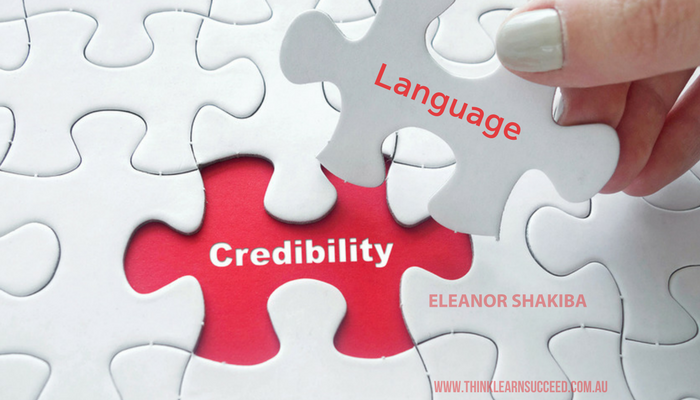
It’s a gripe I often hear in my Women in Leadership program. “My team doesn’t take me seriously.” “My boss doesn’t take me seriously.” “My colleagues don’t take me seriously.” Often this issue is expressed as a criticism of the other party. However, it’s usually a sign that the speaker needs to work on boosting her credibility. That, of course, is advice that’s usually offered with little thought given to how precisely it can be implemented. After all, credibility is an abstract concept. But to build it, a leader needs to take concrete action.
Doing this becomes easier when you understand the three basic components of credibility. Most dictionary definitions of credibility will mention trustworthiness and believability. To this list, I think we should add congruence, or the ability to be perceived as walking your talk. Let’s explore these three components of credibility, seeking methods of building each one.
Trustworthiness is defined by psychologists as an attitude in a response to which someone is perceived to be honest, fair and benevolent. Put simply, this means they are deemed worthy of trust. Actions which can enhance perceptions of an individual’s trustworthiness include holding confidences, doing favours for someone else and taking an interest in others’ needs and concerns. Another way in which trustworthiness can be enhanced is through hearsay evidence. In other words, what is said about someone by people who know them well. This is why building positive social networks can be critical to reputation building, particularly early in your career.
Believability is strongly linked to plausibility. When someone is believable, others trust their advice or opinions. Professionals can achieve believability by making their expertise known. For example, clients are more likely to believe advice offered by a professional who specialises in solving their precise problem – an expert in injury compensation claims, for example. Believability can be increased by building a visible track record in your area of expertise. One fundamental way of doing this is to publish articles in your professional domain.
Congruence is the final component of credibility. It is created when someone is seen to act in alignment with what they say. When someone is perceived to be incongruent, they are likely to be deemed untrustworthy, unbelievable and therefore lacking in credibility. So how can professionals build congruence?
Firstly, they need to have clarity around their own values and goals. Secondly, they need to present a persona which aligns fully with those values and goals. A simple strategy which can be used to achieve this alignment is choosing a consistent tone of messaging and style of presentation which can be used in all professional interactions.
About the author of these tips
Eleanor Shakiba teaches smart professionals to build their social and emotional intelligence. Since 1994, she has been teaching talented people – like you- how to think, communicate and behave in ways that build success. Eleanor holds qualifications in Social Anthropology, Applied Psychology, Adult Education and Neuro Linguistic Programming.
